Top 5 Dog Foods to Support Akita Puppies’ Growth and Development

Selecting the right food for your Akita puppy is crucial to their healthy growth and development. These spirited, large-breed pups require a balanced diet of quality ingredients to support their rapid growth, energy demands, and breed-specific needs.
Choosing the wrong food can lead to nutritional gaps or even growth issues. For insights on finding the best dog food for Akitas, focusing on options tailored to their unique requirements is essential. In this guide, you’ll discover top picks designed to meet their nutritional needs and ensure a strong start in life.
Table of Contents
Understanding the Nutritional Needs of Akita Puppies
Knowing what your Akita puppy needs in their diet is vital for their health. These pups grow fast and require precise nutrition to support their development. Let’s break it down into the key areas: protein, fats, and essential nutrients.
Protein Requirements
Akita puppies are large, active dogs. Their muscles proliferate, so they need high-quality protein every day. Lean meats like chicken, beef, and fish are great options. Protein helps build strong muscles and fuels growth. To ensure proper development, look for puppy foods with at least 22-30% protein content from animal sources. Wondering how to decide on the best protein source? This raw feeding guide offers some helpful tips.
Fat Content
Did you know fats aren’t just for energy? Healthy fats play a significant role in brain development and keep skin and coat shiny. Omega-3 and Omega-6 fatty acids are excellent for this. Foods rich in fish oil or flaxseed are perfect. Puppies also need about 12-20% fat content in their diet to stay fueled for their playful days. Unsure about fat in your Akita’s food? Explore this Akita feeding guide for more insights into balanced diets for large-breed pups.

Photo by Rafael Rodrigues
Vitamins and Minerals
Puppies need a broad mix of vitamins and minerals to develop strong bones, teeth, and immune systems. Calcium and phosphorus are crucial during the growth phase. Zinc and vitamin E keep their coats healthy, while DHA (a fatty acid) supports brain and vision development. It’s wise to check if your puppy’s food has added supplements or natural sources of these essential nutrients. Need a specific breakdown? Learn more about Akita nutrition essentials.
Each bite your puppy takes sets the stage for a robust and healthy life. Choose foods that meet these needs, and your Akita puppy will thrive!
Top 5 Dog Foods for Akita Puppies
Choosing the best food for Akita puppies is essential for fostering their growth and meeting their energy levels. These large-breed puppies need formulas tailored to their size and specific nutritional requirements. Below are five excellent dog food options to set your Akita puppy up for a robust and healthy future.
1. Purina Pro Plan Puppy Large Breed
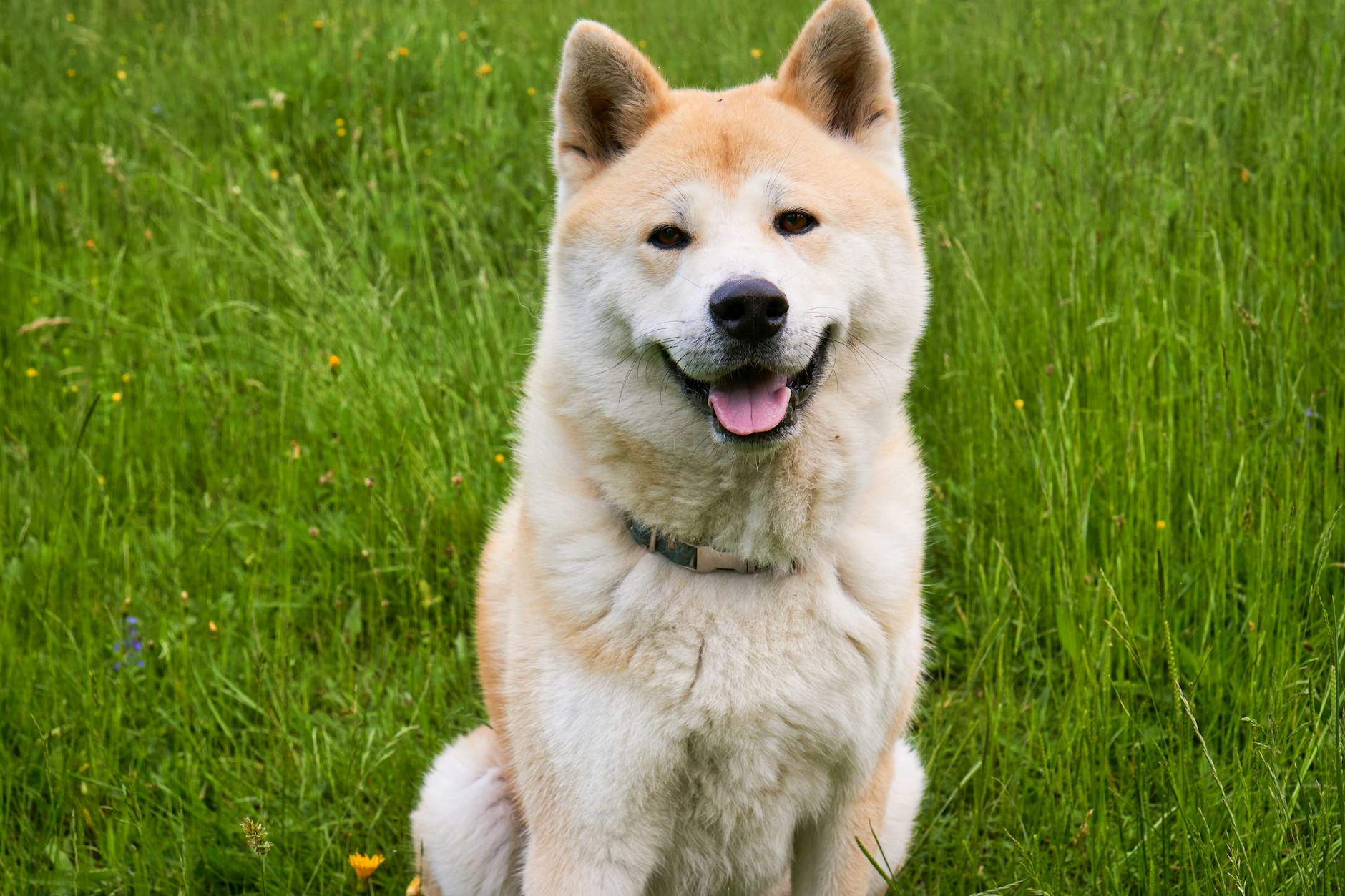
Photo by Matthew Cain
Purina Pro Plan Puppy Large Breed is a strong contender for Akita puppies, focusing on delivering precise nutrition tailored to large breeds. Its standout feature? It contains DHA from fish oil to support brain and vision development, a critical factor for Akita pups. The high protein levels from real chicken help strengthen their growing muscles, while the glucosamine supports joint health—a common concern for larger breeds like Akitas. Want to explore more puppy options? Learn more here.
2. The Farmer’s Dog Food
The Farmer’s Dog Food stands out for its human-grade quality, offering fresh, whole-food formulas that cater to Akita puppies’ unique dietary needs. Each customized recipe ensures your pup gets balanced protein, fats, and essential nutrients. With real meat as the primary ingredient, this food doesn’t compromise quality or digestibility. Vitamins from fresh veggies also promote a shiny coat and a strong immune system. Check out more about The Farmer’s Dog Food’s benefits here.
3. Orijen Large Breed Puppy Food
Known for its biologically appropriate recipes, Orijen caters perfectly to the requirements of large-breed puppies like Akitas. This formula boasts an impressive 85% premium animal ingredients, rich in high-quality proteins and essential fatty acids. Adding fresh WholePrey components—like meat, organs, and cartilage—ensures your pup receives nutrition that closely mimics what their ancestors consumed in the wild. For more tailored nutrition advice, visit this helpful guide.
4. Taste of the Wild High Prairie Puppy
Taste of the Wild’s High Prairie Puppy formula offers excellent value and unique ingredients like buffalo and roasted venison. This grain-free formula provides highly digestible, energy-packed nutrition, ideal for Akita puppies with sensitive stomachs. It also includes a robust blend of omega fatty acids for coat health, plus species-specific probiotics to aid digestion. This food is well-suited for Akitas, which thrives on a diverse protein profile.
5. Wellness CORE Large Breed Puppy
Wellness CORE Large Breed Puppy formula focuses on maintaining an optimized growth rate without overfeeding. It includes deboned chicken and turkey meals as rich protein sources to support strong muscles, alongside DHA for brain and eye development. What’s more, it provides balanced calcium and phosphorus levels for bone development, which is crucial during your puppy’s rapid growth phase. Wellness CORE aligns with the meticulous needs of Akita puppies for a strong start.
Reliable nutrition is foundational to any Akita puppy’s healthy development. With these food options, you’ll set your pup on the right path for a thriving future.
Feeding Guidelines for Akita Puppies
Feeding your Akita puppy involves more than just filling a bowl—it’s about ensuring their needs are met at different stages of their growing life. With their unique size and metabolism, Akita puppies require a tailored diet plan that adjusts as they mature. Here’s a breakdown to help you provide the best for your pup.
Age-Based Feeding Recommendations
The amount and frequency of feeding an Akita puppy depend on their age, activity level, and weight. Let’s simplify it:
Up to 3 Months: At this age, your puppy needs small, frequent meals—typically four meals a day. Their growing bodies demand a balanced mix of protein, fats, and essential nutrients. Foods made for large-breed puppies like these are an ideal choice.
3-6 Months: Reduce meals to 3 times daily as they grow. Expect their portion sizes to increase due to their rapid growth, but avoid overfeeding to prevent joint issues common in large breeds.
6-12 Months: Start transitioning to 2 meals daily as their growth rate slows. Monitor their weight and adjust portions based on activity levels.
Each Akita puppy grows differently, so keep an eye on their body condition. If unsure, their ribs should be felt but not easily seen. Need more active tips for daily rations? Check out this guide.
Transitioning to Adult Dog Food
So, when is the right time to switch to adult food? Generally, this happens around 12-18 months, depending on how quickly your Akita matures. Smooth transitions are essential to avoid stomach upset. Here’s how to make the shift:
- Mix Gradually: Over 7–10 days, mix increasing amounts of adult food with their puppy food.
- Monitor Their Reaction: Watch for signs of digestive issues like loose stools or food refusal.
- Portion Adjustments: Adult dog food is more calorie-dense. Measure portions thoughtfully to maintain a healthy weight.
Adult formulas with protein-rich ingredients and joint support are ideal for large-breed dogs like Akitas. Explore options that maintain the same high-quality standards as their puppy diet—check labels for glucosamine and chondroitin to support those growing joints. Curious about typical feeding routines? Check out this Akita feeding guide.
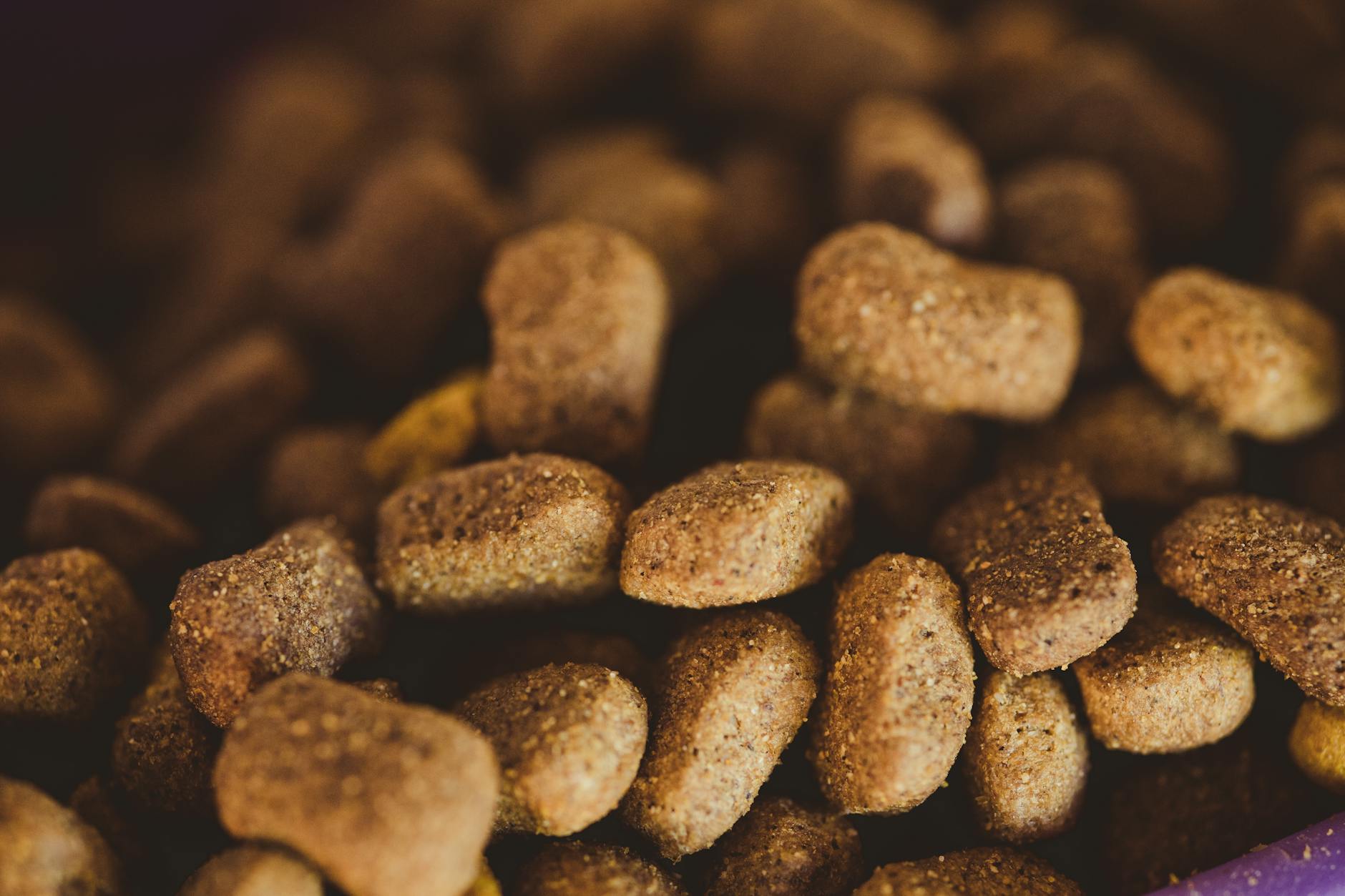
Photo by Rafael Rodrigues
Putting care into feeding ensures your Akita grows into a strong and energetic companion. From adjusting meal frequency to transitioning foods effectively, these steps will keep you ahead of your growth needs.
Common Mistakes to Avoid
While selecting the best food for your Akita puppy is essential, how you feed them matters as much. Many new puppy owners inadvertently make simple errors that can affect their puppy’s growth and health. Let’s identify some common mistakes and learn how to avoid them.
Overfeeding or Underfeeding: Explain the importance of portion control.
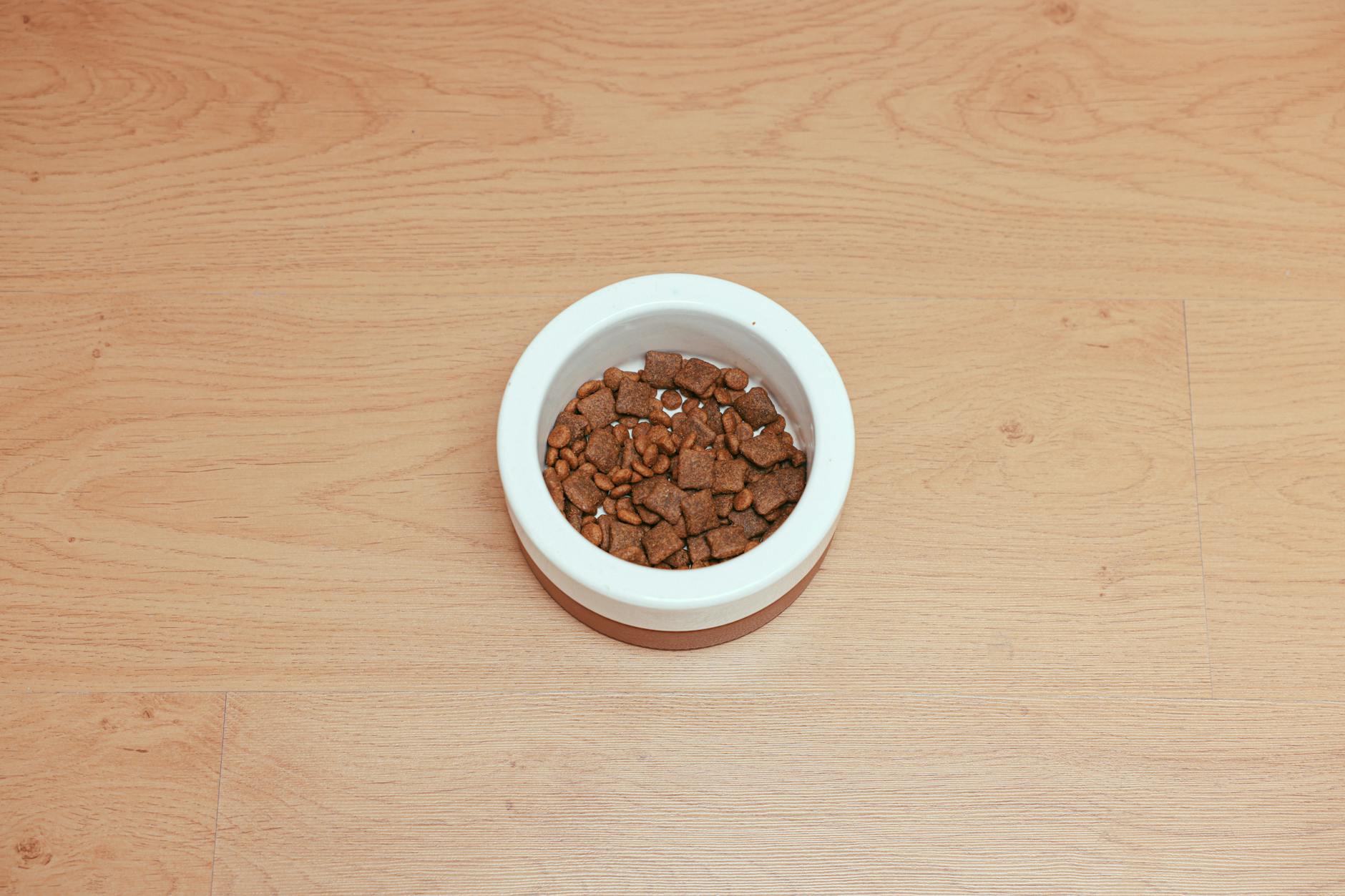
Photo by Cup of Couple
Portion control is crucial for Akita puppies. Overfeeding can lead to obesity, which strains their growing joints while underfeeding might deprive them of essential nutrients. Puppies need carefully measured portions based on size, age, and activity level. A simple rule of thumb? You should feel their ribs with light pressure but not see them prominently.
Don’t assume their appetite indicates their needs—left unchecked, your pup might overeat, causing long-term health problems. On the other hand, skipping meals or feeding too little can disrupt their growth. For tips on appropriate feeding amounts, consult a vet or find specific puppy feeding guidelines here.
Choosing Low-Quality Food: Discuss the potential risks of feeding low-quality dog food.
The food you select should be made with high-quality ingredients. Low-quality dog food, often filled with fillers and artificial additives, can result in nutritional gaps, digestive upset, or long-term health issues like poor coat quality or weak bones. Ingredients matter; your Akita deserves real meat-based protein and balanced nutrients for their growing body.
When evaluating dog food, check the label for accurate protein sources like chicken, beef, or fish. Avoid products where fillers like corn or soy are predominant. Opt for tried-and-true brands or fresh food services that focus on nutrition, like those recommended in our Akita puppy food guide.
Ignoring Specific Health Needs: Emphasize the importance of consulting a vet for tailored advice.
Every Akita puppy is unique. Some may have dietary sensitivities or specific health conditions that require special care. Guesswork isn’t the best approach here. Consulting a veterinarian ensures you meet your puppy’s individualized needs—whether managing allergies, ensuring proper joint health, or supplementing for deficiencies like DHA.
For instance, if your puppy shows signs of itching or digestive troubles, they might need a hypoallergenic formula. A vet can also guide you toward foods with glucosamine and chondroitin, both essential for large breeds prone to joint issues. Curious about potential health risks? Learn more from this reference guide on feeding puppies correctly.
Avoiding these mistakes will prepare your Akita puppy for an intense, healthy growth journey. Feeding might seem simple, but getting it right makes all the difference.
Conclusion
Choosing the right dog food for your Akita puppy is more than just reading labels—it’s about understanding what fuels their growth and energy needs. The foods you select should cater to their breed-specific requirements, offering the perfect balance of protein, fats, vitamins, and minerals. Giving your Akita an optimal diet sets them up for a robust, healthy future.
For additional guidance, check out this helpful Akita feeding guide and explore more tips on foods that work best for this unique breed.
Frequently Asked Questions: Dog Foods for Akita Puppies’ Growth
What are the essential nutrients for Akita puppies?
Akita puppies need high-quality proteins, healthy fats, and essential vitamins. These nutrients support growth, immunity, and energy levels. A balanced diet tailored for large breeds is key. Read more about nutritional needs for Akitas.
Should I choose grain-free food for my Akita puppy?
It depends on your puppy’s specific needs. Grain-free foods may benefit pups with sensitivities but aren’t always better. Look for balanced options with quality ingredients approved by your vet.
How often should I feed my Akita puppy?
Feed Akita puppies three to four small meals daily until six months old. Afterward, transition to two meals a day.
What ingredients should I avoid in puppy food?
Avoid foods with artificial preservatives, fillers like corn or soy, and low-quality by-products. These don’t provide nutritional value and can harm your pup.
Can I switch my Akita puppy to adult food early?
No, switching too early can affect proper growth. Stick to puppy food until they reach 12-18 months of age or as your vet advises.
For more insights on Akita-related care, explore the dog breeds section here.

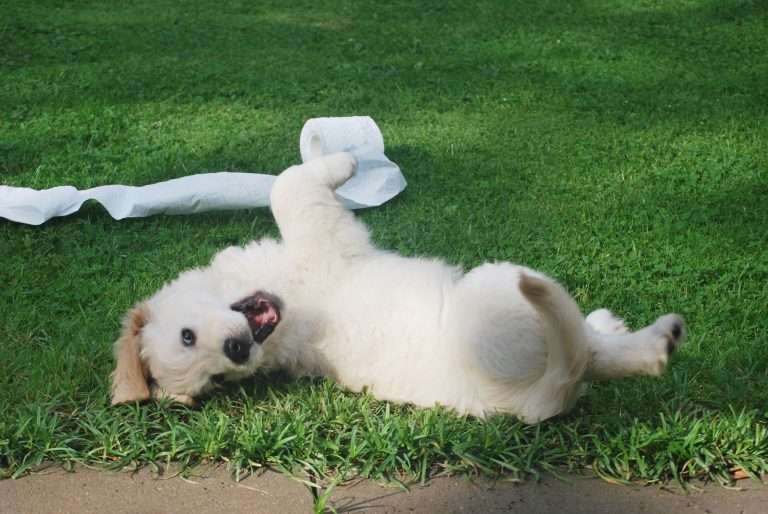


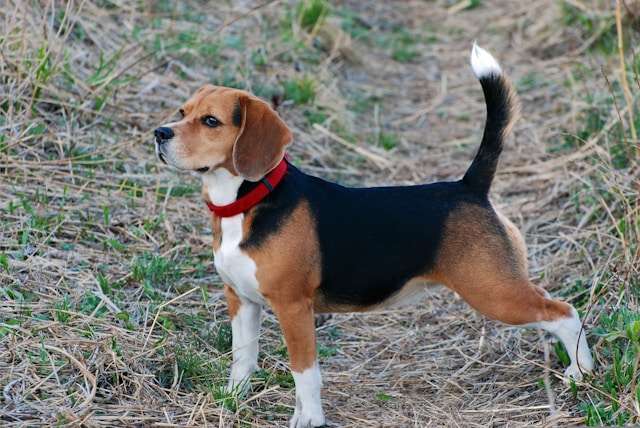

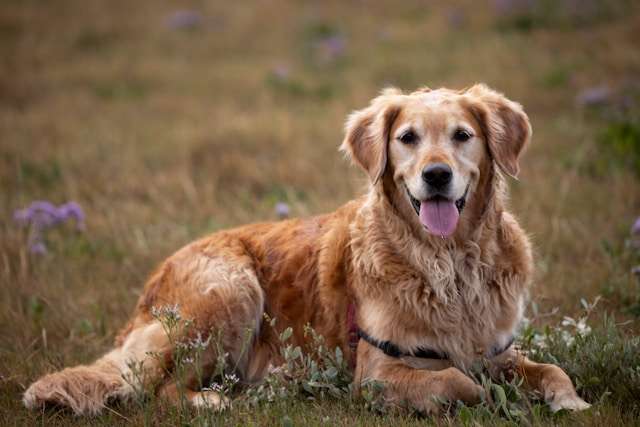
Thanks for sharing. I read many of your blog posts, cool, your blog is very good.
Thank you